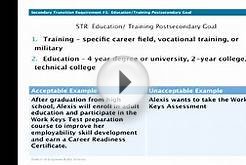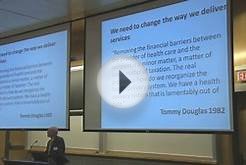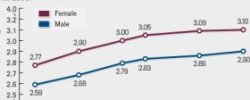One of the biggest reasons why people choose to continue their education is as a means of improving their career prospects. Most of the highest-paid jobs require advanced degrees or specialty certificates that can only be earned through dedicated training. Sometimes, people enroll in specific courses as a way of entering a particular field, as is the case with someone who wants to go to law school or become an electrician. Others see higher education as something of a door to opportunities more generally, and take a range of courses that will enable them to be more marketable as thinkers and workers in a number of different fields.
Undergraduate Programs
Undergraduate learning typically takes place on university campuses, either in person or over the Internet. Most countries support a limited number of so-called “public” universities, which tend to be large research institutions. Students may also elect to attend smaller private schools. There is usually a cost difference, with private schools tending to be more expensive; there may also be big differences when it comes to student body size, quality of life, and campus culture. In either case, studies at either public or private universities typically last four years and culminate in either a Bachelor of Arts or Bachelor of Science degree.
Students who aren’t sure what sort of post-secondary education is best for them may begin at a community college, which is typically a two-year program leading to an associate’s degree. This type of degree is often applicable towards a bachelor’s, but also has value on its own. Many entry-level jobs require an associate’s degree in order to prove basic knowledge and some level of higher learning.
Trade and Vocational Schools
Students who hope to begin work in specific trade areas — car mechanics, for instance, or plumbing — typically attend vocational school in order to learn the skills needed for success. While most university programs focus on broad topics and help students think about big ideas, trade and vocational programs are typically dedicated to particular areas and tend to be much shorter as a result, often taking only a year or two to complete. Degrees are rare in these cases, but graduates often earn certificates and sometimes also local licenses.
Graduate Degrees
Many of the most prestigious career paths require quite a lot of postgraduate learning. People who want to be doctors, lawyers, or other professionals, like architects and business leaders, often need to pursue master’s or even doctoral-level work. All of these programs are a part of the larger post-secondary educational space. How long they take varies by field, but most require at least a year past the undergraduate degree — and they can take much longer in some cases.
Financial and Other Considerations
One of the biggest drawbacks to post-secondary education is its cost, followed closely by the time it takes to really commit to most programs. Some countries underwrite all or part of university expenses for qualified students, but this is not universal. Private schools often have very high rates for tuition and fees. Most will market themselves as a long-term investment, arguing that students who graduate tend to find better paying jobs, which makes high upfront costs balance out over time. In some fields this is true, but students should carefully weigh their career ambitions against the cost of getting there before becoming too heavily invested.
Many people choose to take out loans to pay for their post-secondary training. Scholarships and grants are also available for some students who cannot pay all of the costs upfront. Most loans and deferred payment plans require students to pay interest, which can often add significantly to the amount owed.
Time considerations are also important, particularly for students with families or work responsibilities. It often takes a lot of energy to stay focused on and devoted to university-level coursework. The rise of Internet classes and evening and executive programs on many campuses has helped make it easier for people to take courses on a more flexible schedule, but it is still important for students to be realistic about how much time higher education will really take.









